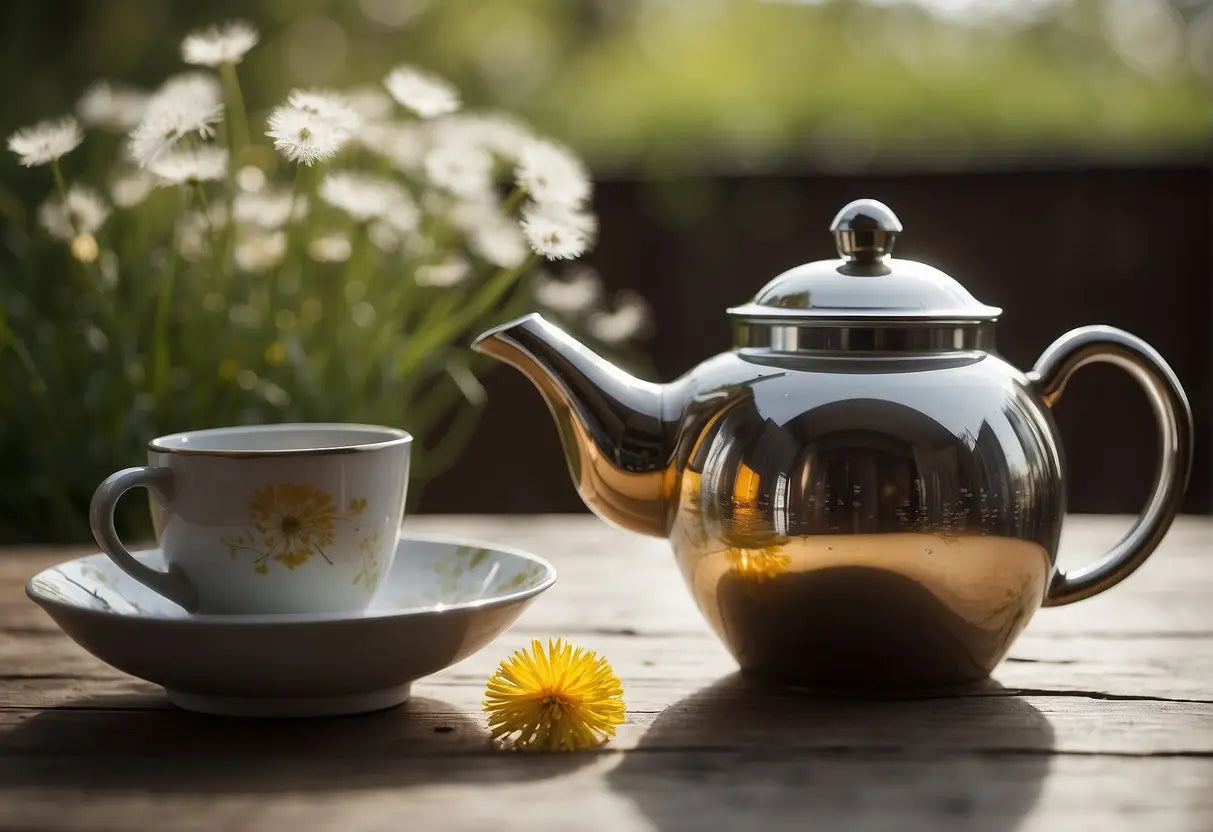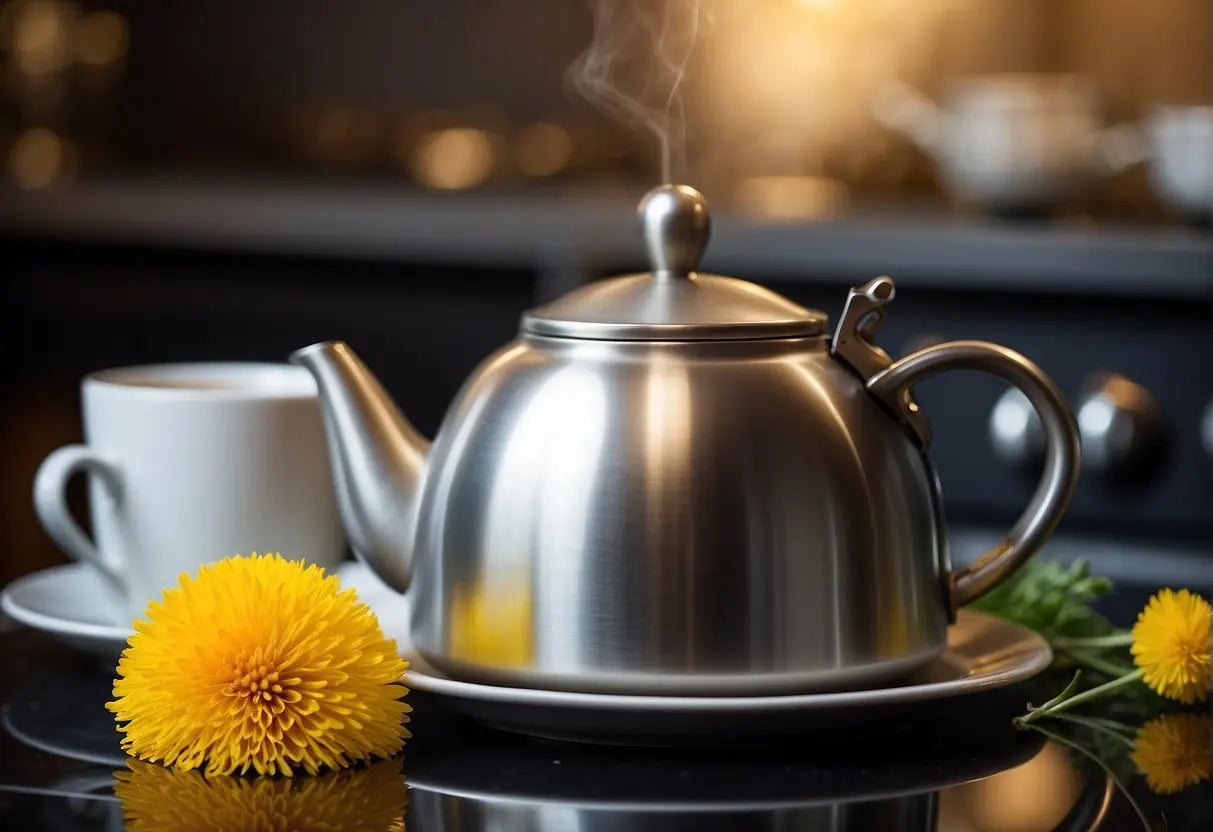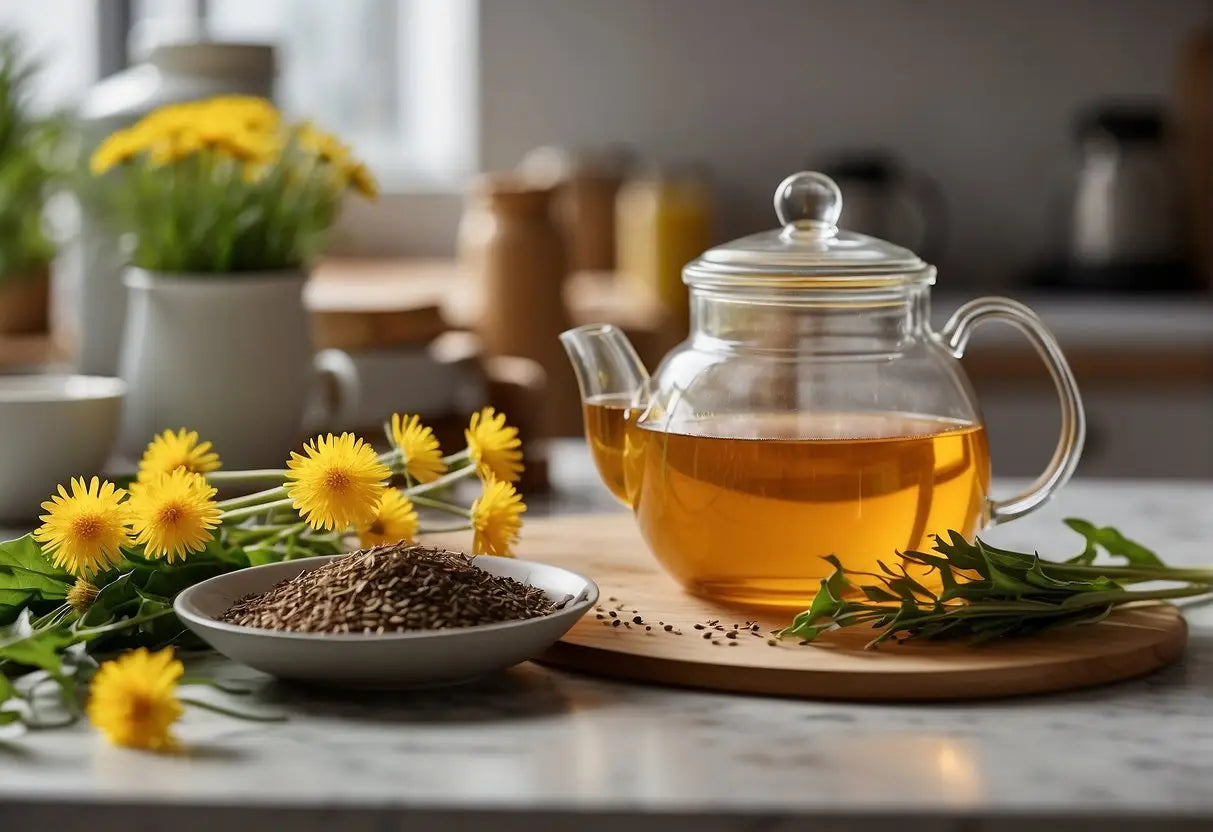How to Make Dandelion Tea
Dandelion tea is derived from the Taraxacum species, commonly known as dandelion. Each part of this plant is edible, and it’s known for its several potential health benefits when consumed in tea form.
- Rich in Antioxidants: Your body can benefit from the high levels of antioxidants in dandelion tea, which help in reducing cellular damage caused by free radicals.
- Promotes Liver Health: Dandelion tea is traditionally used to support liver function and promote the detoxification process.
- Aids in Digestion: It can act as a mild laxative and increase your stomach's production of digestive juices, aiding in alleviating constipation and promoting digestion.
| Nutrient Type | Potential Benefit |
|---|---|
| Vitamins A, C, D | Support immune function and skin health |
| Potassium | Can help regulate blood pressure and heart health |
| Iron | Essential for blood health and energy levels |
| Zinc | Contributes to immune system and metabolism efficiency |
- Supports Weight Loss: Some suggest dandelion tea may help in weight management due to its diuretic properties and potential role in fat metabolism.
Be cautious with consumption, particularly if you are allergic to dandelions or have certain medical conditions. Always consult with your healthcare professional before starting any new dietary supplement, especially if you're taking other medications.
Ingredients and Tools

Bestsellers
To prepare dandelion tea, you'll require several ingredients, alongside a few basic kitchen tools. Ensure that all tools and ingredients are clean and ready for use.
Ingredients:
- Fresh dandelion flowers, 1 cup or
- Dried dandelion leaves, 2 teaspoons
- Water, 2 cups
- Optional: honey or sugar to taste
- Optional: lemon slice for flavor
Tools:
- A pot or saucepan
- A strainer or tea infuser
- Measuring cups and spoons
- A kettle, if using dried leaves
- A teacup or mug
Instructions:
- Gather your dandelions: Opt for ones free from pesticides.
- Measure water: Use the measuring cup for accuracy.
- Boiling process: Use your pot or kettle to boil water.
- Steeping: Place flowers or dried leaves into the teacup or pot.
- Straining: Employ the strainer to separate leaves from liquid.
For a refreshing touch, add a slice of lemon or a hint of sweetener to your liking. Enjoy your homemade dandelion tea comfortably.
Harvesting Dandelions

To ensure the best quality and taste for your dandelion tea, proper harvesting methods are crucial. This includes timing the harvest correctly and identifying the right parts of the plant.
Identifying Dandelions
Dandelions are identifiable by their bright yellow flowers and jagged green leaves. They should not be confused with similar plants such as cat's ears (Hypochaeris radicata) which have similar flowers but different leaf shapes. Ensure the plants have not been subjected to pesticides.
Best Time to Harvest
The optimal time to harvest is early spring, when the leaves are young and tender, or late fall. Look for dandelions in the morning when their nutrient content is highest. Avoid rainy days as wet dandelions will spoil faster.
Picking and Collecting
Use a basket or cloth bag for collection to allow air circulation. When picking dandelions, grasp the base of the plant and gently pull to collect the whole plant, including roots. Wearing gloves can protect your hands during this process.
Preparation of Dandelions
Before you begin making dandelion tea, it's essential to properly prepare the dandelions to ensure a clean and pleasant taste. Each step is crucial for a high-quality beverage.
Washing and Cleaning
1. Selecting: Choose fresh dandelion leaves and roots, ensuring they are free from pesticides and herbicides. 2. Washing: Rinse the leaves and roots thoroughly under cool running water to remove dirt and small insects. It is recommended to do so multiple times to ensure cleanliness.
Lao Ban Zhang
Drying Dandelion Leaves
After washing, gently pat the leaves dry with a clean towel. Lay them out on a baking sheet, making sure they are in a single layer without overlap.
- Temperature: Preheat your oven to a low setting, around 200°F (93°C).
- Duration: Place the baking sheet in the oven and dry the leaves for 30 minutes to 1 hour, checking periodically.
Roasting Dandelion Roots
Once cleaned, chop the dandelion roots into small, even pieces to allow for uniform roasting.
- Preparation: Spread the chopped roots on a baking tray in a single layer.
- Roasting: Roast at 250°F (121°C) for 2 hours or until they become dry and brittle to the touch.
Brewing the Tea
In this section, you'll learn the precise steps to prepare dandelion tea. Pay close attention to water temperature and steeping time for the best results.
Boiling Water
Start by bringing a pot of water to a rolling boil. Use filtered water if possible for a cleaner taste. For one cup of tea, you'll need about 8 ounces (ca. 237 ml) of water.
- Quantity: 8 ounces of water per cup
- Temperature: Bring to a rolling boil
- Tip: Use filtered water for better flavor
Steeping Dandelion Parts
Once your water is boiling, it's time to steep the dandelion parts. If you're using fresh dandelion leaves, flowers, or roots, rinse them thoroughly. For dried parts, measuring is simpler.
- Fresh Dandelion: 1/4 cup of any mixture of leaves, flowers, or roots
- Dried Dandelion: 1-2 teaspoons per cup
Place the dandelion parts in a tea infuser or directly into the cup. Pour the boiling water over the dandelion, cover your cup, and steep.
-
Steeping Time:
- Leaves: Steep for about 5-10 minutes.
- Roots and Flowers: Steep for 15-20 minutes.
- Method: Use a tea infuser or place directly in the cup.
- Cover the Cup: Helps to retain heat and essential oils.
Adjust the steeping time according to your taste preference. After steeping, strain if necessary, and the tea is ready to be enjoyed.
Serving Suggestions

When serving dandelion tea, the right combination of sweeteners or flavors can enhance its natural taste, while thoughtful presentation elevates the overall experience.
Adding Sweeteners and Flavors
To suit your taste, you may want to sweeten your dandelion tea. Options include:
- Honey: A drizzle of honey can complement the tea's earthy tones.
- Sugar: A teaspoon of white or brown sugar will add a classic sweetness.
- Stevia: For a no-calorie sweetener, stevia is a natural option that blends well.
- Lemon: A squeeze of lemon juice can add a refreshing zesty twist.
For added depth, consider these flavors:
- Cinnamon: A pinch of ground cinnamon or a cinnamon stick can introduce a warmth to your tea.
- Ginger: Grate some fresh ginger into your tea for a spicy kick.
- Mint: Fresh mint leaves can offer a cooling effect, perfect for a summer drink.
Presentation Tips
Glassware:
- Clear Glass: Opt for a clear glass mug to showcase the golden hue of the tea.
- Teacup: A delicate teacup can make the experience feel more special.
Garnishes:
- Dandelion Flowers: Top your tea with a few edible dandelion petals for a charming touch.
- Herbal Sprigs: A sprig of mint or lavender provides aroma and visual appeal.
Serving Temperature:
- Hot: Serve in a pre-warmed cup to maintain temperature.
- Iced: Fill a tall glass with ice and pour the tea over for a cool refreshment.
Storage and Preservation
Proper storage of dandelion tea is essential to maintain its flavor and medicinal properties. Follow these guidelines to ensure your tea remains fresh and potent:
-
Dry Storage: Store your dried dandelion leaves in an airtight container away from light and heat to prevent degradation of quality. Glass jars with tight lids are ideal.
-
Moisture-Free Environment: Keep the container in a cool, dry place like a pantry or cupboard. Exposure to moisture can lead to mold growth.
-
Refrigeration for Brewed Tea: If you have prepared dandelion tea and wish to save it for later, transfer the cooled tea into a glass or BPA-free plastic container. It can be kept refrigerated for up to 5 days.
Labeling:
| Contents | Date of Storage |
|---|---|
| Dandelion Tea | MM/DD/YYYY |
-
Freezing Option: For longer preservation of brewed tea, pour the tea into ice cube trays and freeze. Transfer the frozen cubes into a freezer bag, label with the date, and use within six months for best quality.
-
Avoid Contaminants: Use clean, dry spoons or scoops when handling dried dandelion leaves to prevent introducing moisture or other contaminants into your storage container.
By adhering to these storage recommendations, you can enjoy dandelion tea at its best for an extensive period. Remember to periodically check your stored tea for any signs of spoilage such as off-odors, discoloration, or mold.
Potential Side Effects and Considerations

When incorporating dandelion tea into your diet, you should be aware of the following side effects and considerations:
-
Allergic Reactions: If you're allergic to dandelion or related plants like ragweed, chrysanthemums, marigolds, daisies, and others, you may experience an allergic reaction.
-
Medicinal Interactions: Dandelion can interact with certain medications:
- Diuretics: Dandelion has natural diuretic effects which may enhance the effects of these medications.
- Anticoagulants: As dandelion may have blood-thinning properties, it could potentially increase bleeding risk if you're taking blood thinners.
- Antibiotics: The herb might inhibit the effectiveness of certain antibiotics.
-
Pregnancy and Breastfeeding: The safety of dandelion tea during pregnancy or breastfeeding isn't well-established. Exercise caution and consult with your healthcare provider before use.
-
Gastrointestinal Discomfort: Some individuals may experience stomach discomfort or diarrhea.
How to Mitigate Risks:
- Start with small amounts to see how your body reacts.
- Consult your doctor if you have any ongoing health conditions or if you're taking medication.
- Pay attention to your body's signals. Discontinue use if you experience any adverse effects.
← Older post Newer post →











